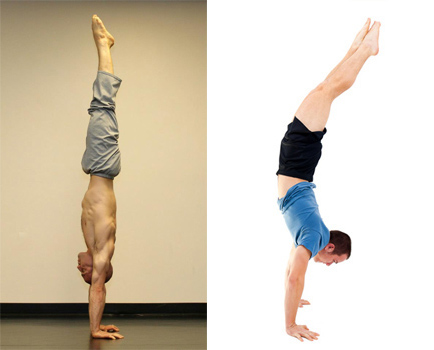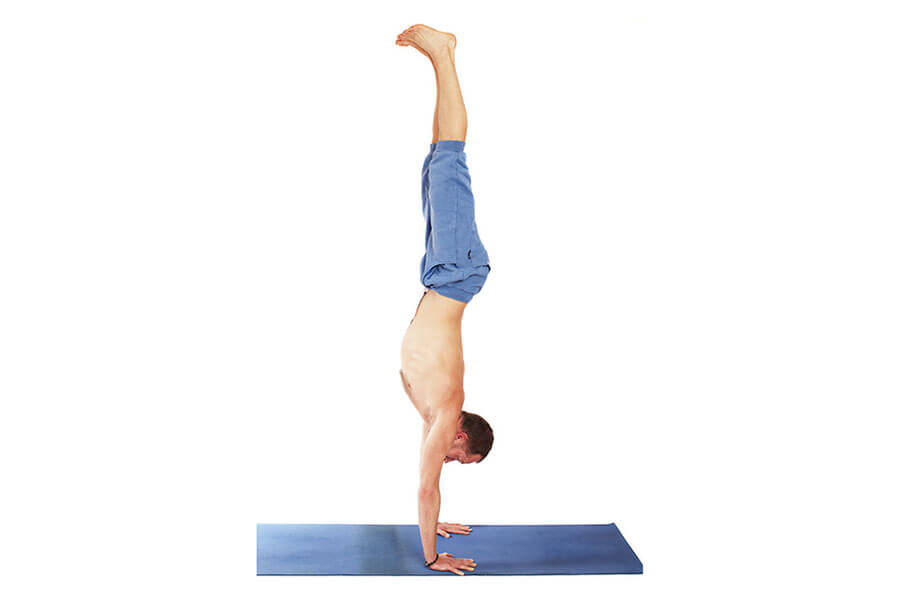There are lots of slight variations of the technique listed above, but essentially what you want to do is look at your center of gravity on the floor. By spotting the area between your hands, you are utilizing your eyes to aid in kinesthetic awareness, which greatly assists balance. This technique of spotting the center of gravity and having a visual marker becomes incredibly useful down the road when doing skills like back handspring step-outs on beam and pirouetting skills on bars where you must have a visual of what you are doing. Also, going a bit further on this concept of spotting with the eyes/using visual markers during skills, it becomes super helpful when doing saltos, double saltos, and adding twisting. This develops air sense and allows the gymnast to know where they are in the air.
Back to handstands, ideally, the chin should be tilted only slightly, just enough that they can clearly see the center of gravity between the hands. As long as their spine is not distorted into an arch, their shape is fine. The head sticking out a lot tends to cause an undesirable arch, a number of bad habits in other skills, and it just doesn't really look as nice. Don't forget though, that there are skills that you should release the head position, such as front layouts, front aerials, sheep jumps, and ring jumps/leaps, so it's not a constant, always-bad technique. It just has to be applied correctly to the right skills.

